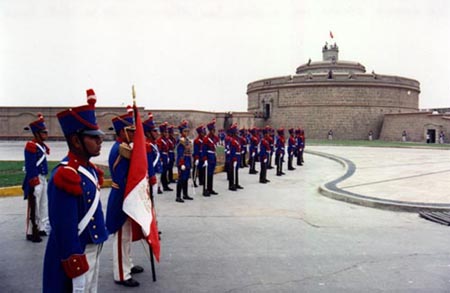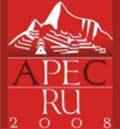United Kingdom
| Welcome |
| Peru in Brief |
| History |
| Geography |
| Government & Politics |
| Maritime delimitation between Peru and Chile |
| News |
Links |
| CALLAO | |||
 |
|||
| Real Felipe Fortress | |||
| Capital: | Callao | ||
| Elevation: |
0 m | ||
| Climate: |
Template | ||
| History: |
The first inhabitants of Callao were native people dedicated to fishing and agriculture. The most ancient lythic artefacts on the Peruvian coast have been found at the mouth of Callao 's Rimac and Chillon rivers, some dating from 11,000 years ago. |
||
Founded in 1537, the city of Callao was in colonial times the leading point for the gold and silver taken by the Spanish Conquerors from the Inca Empire. During the colony, Lima was defended from incursions by pirates by the fortress-port of Callao . Some famous pirates that made incursions in peruvian waters were: Sir Francis Drake , Tom Cavendish , Hawking, Jorg Spitberg and Jacob Clerk . On October 28, 1746 an earthquake and a tidal wave demolished the city which had a population of 5,000. Only 200 people survived. Viceroy José Manso de Velasco started the reconstruction of Callao and also ordered the creation of a fortress, named Real Felipe in honor of King Felipe V. It is the biggest and strongest fortress created by Spain in the Americas . |
|||
Great expeditions also started in Callao . In 1567 an expedition departed from Callao and discovered the Solomon Islands . Another one in 1590 discovered the Marianas and Marquesas islands . In 1604 an expedition from Callao discovered the Galapagos Islands . On October 28, 1856 , the frigate Amazonas with Captain José Borterín , left Callao on a trip around the world. They returned to Callao on May 24, 1858 . The most famous expedition from Callao on the XX century was the one by norvegian explorer Thor Heyerdall . Heyerdall wanted to demonstrate that polynesians were descendants of ancient Peruvians. |
|||
| Places of Interest: | The Fortress of Real Felipe is the main tourist attraction of Callao , it was built in 1746 during the colonial period and is the largest of all the fortresses that Spain built. The Army Museum is located in its sheltered interior. |
||
Central Callao. Plaza Grau, Calle Constitución, Pasaje Ronald, Iglesia Matriz and other places of interest. |
|||
The Naval Museum has on exhibit cannons and other naval arms from the XIX century to the present. Relics of past naval heroes are of particular interest. |
|||
Archaeological Callao. Pre-Inca ruins of El Paraiso, Complejo de Chivateros, Templo de Media Luna, Huaca Garagay, Templo Piramidal de Kon-Kon; among others. Islands of Callao . Isla San Lorenzo, El Fronton, Islas Palominos, Islas Cavinzas. |
|||
| <BACK> | |||





